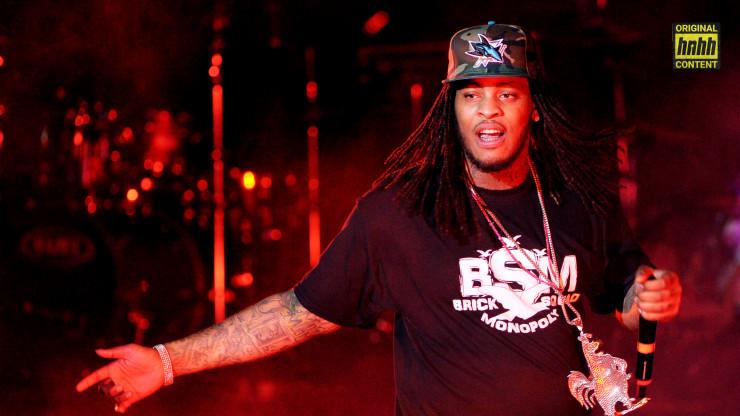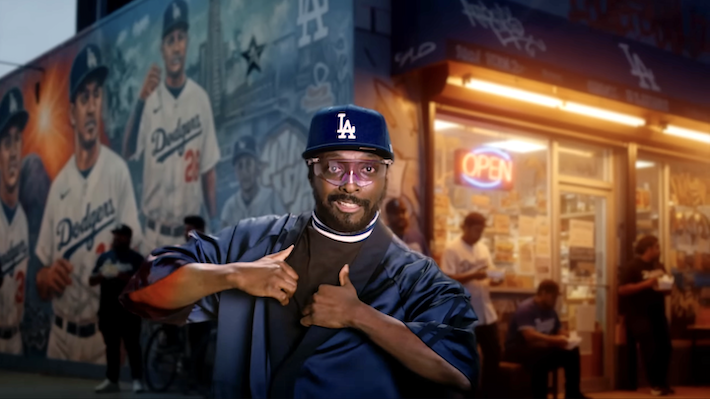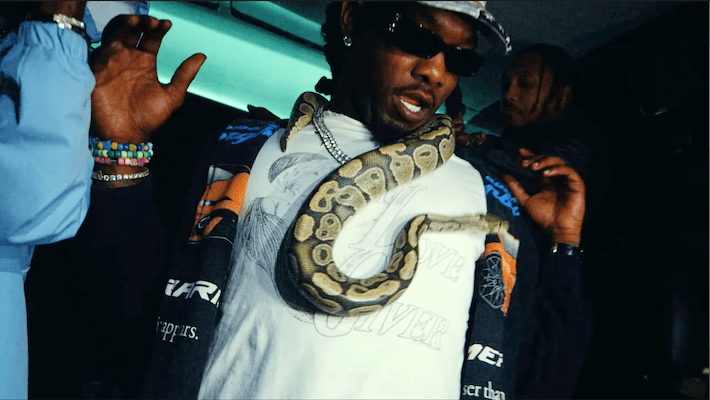Callous, puncturing, visceral, and goonish. Call it what you will, but “Flockaveli” and it’s centerpiece “Hard In da Paint” signify one of trap music’s most critical junctures.
In late 2008, Lexus Lewis found himself penniless and with dwindling career prospects. A high school dropout from Suffolk, Virginia, the aspiring producer had been diligently pumping out Fruity Loops beats in his parents’ basement and cold-emailing various rappers, hoping that his work ethic would attract the attention of potential patrons. It wasn’t until he got word from Flame, a lean, mean-looking protege whose dreaded head popped up in the periphery of visuals, that things began to take off. What started as a steady back and forth over MySpace quickly snowballed into the circulation of hundreds of instrumentals and a subsequent in-person cook-up. By the time Lewis emerged from Waka’s WiFi-less Atlanta bunker, the bulk of what would come to be known as Flockaveli was ready for the masses.

Alexandra Wyman/Getty Images
Of the many songs concocted during those early studio sessions, none would prove to be as influential as “Hard In da Paint.” Originally housed on Waka’s fourth mixtape LeBron Flocka James, the track became a calling card for its creators and the thesis statement of Flockaveli. A snarling party conduit, “Hard In da Paint” offers an arsenal of unmediated simplicity where exuberance and the spectre of violence meld to create a symphony unlike any other. Luger’s production is as subtle as a heart attack, if immediately identifiable: turbulent, grim, and above all else, relentlessly loud. His timely decision to join forces with Waka was the equivalent of arming a juggernaut with a jackhammer and sending them cartwheeling into oblivion. Waka’s brusque demeanor was amplified when paired with Luger’s own seasoned bombast; their 2009 rap peers had the potency of watered-down milk in comparison. Such intoxicating congruence isn’t difficult to comprehend: the duo had a keen understanding of their strengths and were unafraid to give the middle finger to convention. “Hard In da Paint” was the kinetic culmination of everything Waka had envisioned on Salute Me or Shoot Me. It was an anthem from an antagonistic anti-hero basking in the mayhem.
Though it now boasts an indelible legacy as a trap classic, Flockaveli wasn’t initially heralded as such. The album’s auditory assault of an entrance, in conjunction with a title often misconstrued as being in bad taste, ensured that Waka and Luger’s stardom was not without controversy. Waka in particular was lampooned for being regressive, a comic figure that rattled the backpackers, elitists, and snobs. He eschewed traditional pop-rap songwriting, instead opting for gravelly, jab-like aggression and a coarse vocabulary that infuriated detractors. NPR even went so far as to name him “the leader of hip-hop’s tea party movement” in a politically-referential indictment of the times.
And yet for all the hand-wringing and ridicule, Waka paid little mind to the didactics thrown at him by those who questioned how digestible his “shock tactics” were long term. He had no interest in kowtowing to authority figures who belittled and mischaracterized, and waved aside needless sophistication and expectations of technical versatility to make room for his brand of apocalyptic escalation and endless barrages of gunshots. Lines like “When my little brother died, I said, ‘Fuck school’” were delivered as scattered retorts to critics, while tracks such as “F**k This Industry” were decidedly more overt in their intentions.

Ben Gabbe/Getty Images
Flockaveli doesn’t hold a match to the ambition or complexity of, say, Kendrick Lamar’s Good Kid, M.A.A.D City, but its impact on trap music canon and the much larger trajectory of the genre is impossible to overlook. For starters, Waka’s debut was a novel realization of ad libs as a sort of lyrical punctuation. Growls often overshadow the main vocal track and words are strung together with chaotic abandon, each threat snapping into place like a hollow-point puzzle piece. Waka’s confrontational patterns of speech pinball from one Luger-assembled synth to the next, preserving momentum for the ricochet to follow. On top of that, there was something resoundingly tribal that listeners responded to when Waka “fever” first breached the public consciousness. Yes Waka was charismatic, but his personality on wax left a uniquely compelling imprint, his voice tumbling through the motions of quick syllabic skips and scrawling vowels. His penchant for barking onomatopoeia was superimposed on steamrolling one-liners (“Front yard, broad day with the SK”) and bits of thought leadership (“I’ma die for this shawty, man, I swear to God”).
With the triumph of Flockaveli, trap’s once unpolished infrastructure gradually gave way to internet visibility and a sort of lived-in, real-time documentation that quickly broadened its accessibility. Were it not for the breakthrough of Waka Flocka and Lex Luger, it seems highly unlikely that others like , Young Chop, and the Glory Boyz would have graced the national spotlight in the way that they did (it’s worth noting that Sosa repurposed and further popularized Waka’s token, all-caps “Squaaad”).
Waka and Luger’s ascendance wasn’t so much the product of frustrations with the hip hop establishment as it was a newfound fulfillment of the commercial bility that simmered above Atlanta’s concrete jungle. When viewing hip hop in its current, most popular form, the family tree connecting Flockaveli and its centerpiece “Hard In da Paint” to the predominant sounds of the past decade becomes that much more evident. Not only was it was the ignition point for Waka and Luger’s respective careers, but it was an era-defining moment in which contemporary hip hop burst asunder. Club caverns and radio airwaves became breeding grounds for those disciples hoping to pastiche Waka’s magnum opus, while Luger’s operatic proclivities would find their way onto tracks for , , Kanye West, and all manner of beat packs. Luger was a cult figure who grew into a godfather of adherents and eventual inheritors, and Waka was a curator of bedlam who harnessed a power that cut right to the core of rap’s raging intensity. “Hard In da Paint” remains a blunt force masterclass in trap fatalism and a trail-blazing single that distilled the gangsta rap ethos into its purest incarnation.



